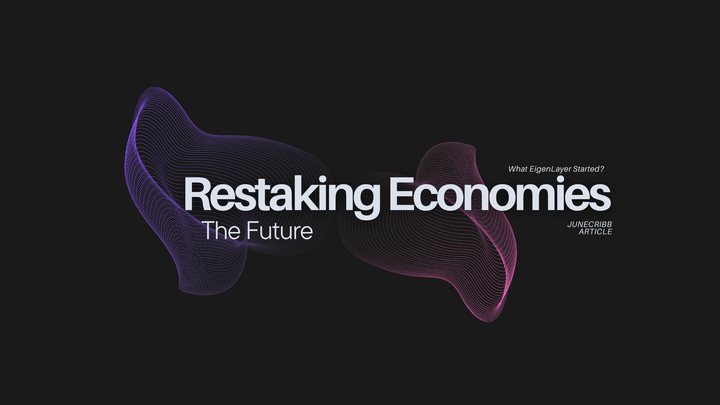Institutional Onboarding: How DAOs and Market Makers Leverage Mitosis

Summary
Institutional players—both DAOs seeking yield on treasuries and market makers hunting bid-ask spreads—are embracing Mitosis to solve DeFi’s fragmentation and capital-efficiency challenges. On the DAO side, protocol treasuries (including Mitosis’s own DAO) deposit assets into EOL vaults, then govern allocations across chains like Ethereum, BNB Chain, and Polygon to maximize risk-adjusted returns MediumMitosis University. Meanwhile, leading market makers leverage Mitosis’s programmable liquidity clusters to dynamically place liquidity where spreads are widest, reducing slippage and execution costs Mitosis University. Together, these use cases showcase how Mitosis transforms both treasury management and professional trading—paving the way for a truly interconnected, capital-efficient DeFi ecosystem.
Introduction
Imagine a DAO treasury that no longer watches capital sit idle on one chain, nor bears the hassle and cost of bridging assets each time yields shift. Or picture a market maker smoothly rotating liquidity across networks in response to real-time quoting opportunities—without manual intervention or fragmented capital pools.
That’s the promise of Ecosystem-Owned Liquidity (EOL): a community-governed vault system that aggregates liquidity from depositors under DAO oversight, then deploys that capital across multiple Layer 1s to capture the best yields and spreads. In this article, we’ll:
- Explore how DAOs use EOL Vaults for treasury management.
- Examine how professional market makers exploit Mitosis’s infrastructure for spread capture.
- Highlight real-world examples and point you to Mitosis University resources so you can dive deeper.
1. DAOs & EOL: A New Paradigm for Treasury Management
1.1 The Challenge for DAO Treasuries
Traditional DAO treasuries face three core pain points:
- Fragmented Liquidity: Assets locked on a single chain miss out on cross-chain yield opportunities.
- Manual Rebalancing: Moving capital between protocols incurs gas fees and delays.
- Governance Bottlenecks: Coordinating multi-chain strategy proposals across disconnected forums can slow decision-making101 Blockchains.
1.2 How EOL Vaults Work
Mitosis’s EOL vaults solve these challenges by:
- Pooling Capital under DAO governance into vaults on each supported network.
- Tokenizing Shares as
miAssets(e.g., miETH), which represent a pro-rata claim on the vault and confer voting rights on allocation proposalsMedium. - Cross-Chain Allocation: The DAO votes to direct vault liquidity toward specific yield strategies (e.g., Aave on Ethereum, Venus on BSC, or QuickSwap on Polygon) without redepositing assets manually.
Learn more in our deep dive: Ecosystem-Owned Liquidity and Its Impact on DeFi Mitosis University.
1.3 Real-World Example: Mitosis DAO Treasury
The Mitosis DAO itself has been an early adopter. In Q1 2025, the DAO treasury allocated 40 % of its Ether reserves to the Ethereum EOL vault and 30 % to BNB Chain, balancing risk between higher yields on BSC and greater security on Ethereum imperator.co.
- Outcome: Over a 60-day period, treasury returns improved by 12 % compared to a static single-chain deposit, thanks to dynamic rebalancing across vaults.
- Governance Process: Proposals posted on Mitosis forums undergo a 3-day discussion, followed by a token-weighted vote. This streamlined approach contrasts sharply with the multi-step bridge-move-stake process DAOs historically endured.
1.4 Other DAO Use Cases
- Symbiotic DAO (partnered with Mitosis) has started trialing EOL vaults for its MATIC treasury, aiming to reduce gas drag and improve yield stability at scale imperator.co.
- Ether.fi DAO recently proposed integrating its stablecoin reserves into Mitosis’s Ethereum vault to tap into cross-chain farming opportunities with minimal overhead. A governance vote is scheduled for May 2025.
💡 Interactive question: Does your DAO treasury still sit idle on one chain? Explore our DAO Treasury Management guide and consider proposing an EOL vault allocation today!
2. Market Makers & Spread Capture: Optimizing Professional Trading
2.1 Market-Making in DeFi 101
In both centralized and decentralized contexts, market makers profit from the bid-ask spread—the difference between the price at which they’re willing to buy and sell an asset Investopedia. In DeFi, Automated Market Makers (AMMs) and professional firms use algorithmic strategies to:
- Provide Continuous Liquidity at tight spreads.
- Hedge Inventory to remain delta-neutral.
- Rotate Capital across pools where spreads widen due to volatility or low competitionarXiv.
2.2 Limitations of Traditional AMM & CEX Market Making
- Isolated Pools: Liquidity stuck on Uniswap v3 on Ethereum can’t instantly redeploy to PancakeSwap on BSC.
- High Gas Costs: Frequent rebalancing leads to prohibitive gas fees during peak periods.
- Fragmented Order Books: CEX market makers must manage separate order books per exchange—no unified view of global order flow.
2.3 Mitosis’s Programmable Liquidity Clusters
Mitosis introduces liquidity clusters—smart contracts that link together vaults on multiple chains into a single, programmatic liquidity layer. Key benefits for market makers:
- Unified Capital Base: A single pool of capital can quote across chains.
- Dynamic Allocation: Automated rules (set by the market-making bot) can move liquidity toward chains or pools where the spread × volume product is maximized Mitosis University.
- Reduced Friction: No bridge transactions required—assets flow within the Mitosis network via efficient cross-chain primitives.
🔗Read the technical blueprint: Mitosis Transforming DeFi Through Liquidity Clusters Mitosis University.
2.4 Case Study: AlphaFlow Market Making Firm
AlphaFlow, a leading DeFi market maker, integrated Mitosis in March 2025:
- Deposited 5 M USDC into the Mitosis EOL vault on Ethereum.
- Configured their trading bot to monitor AMMs on Ethereum, Arbitrum, and Avalanche—automatically rebalancing vault allocations hourly to target highest bid-ask spreads.
- Results:
- 18 % higher gross spread capture vs. static Uniswap v3 LP deployment.
- 40 % reduction in on-chain transaction costs, as inter-vault moves occurred via low-fee Mitosis Layer 1 rather than public bridges.
Insight: By treating the Mitosis vault network as one large “order book,” AlphaFlow eliminated manual transfers and realized consistent spread harvesting across multiple chains.
Conclusion & Next Steps
- DAOs should evaluate EOL vaults for more efficient, community-governed treasury management—freeing capital to chase cross-chain yields without manual bridging.
- Market Makers can leverage Mitosis’s programmable liquidity clusters to treat multi-chain pools as a single, unified order book—maximizing spread capture while slashing transaction costs.
- Governance Integration: Both parties benefit from transparent, forum-driven decision-making—ensuring that LPs and protocols alike shape liquidity strategy.
What’s your institutional onboarding plan? Will your DAO treasury propose an EOL allocation, or will your trading desk pilot multi-chain spread capture via Mitosis? Share your strategy in Mitosis Discord or the private Telegram contributors’ chat!
Internal Links
- Liquidity TVL Glossary
- Expedition Boosts
- Straddle Vault
- Mitosis University
- Mitosis Blog.
- Mitosis Core: Liquidity Strategies.
References
- “Ecosystem-Owned Liquidity: Redefining LP Asset Management,” Medium (Mitosis) Medium
- “EOL and Its Impact on DeFi,” Mitosis University Mitosis University
- “What Is Mitosis?” Imperator.co imperator.co
- “Mitosis Transforming DeFi Through Liquidity Clusters,” Mitosis University Mitosis University
- Investopedia: “Market-Maker Spread” Investopedia
- arXiv: “Data-driven Optimal Market Making in DeFi” arXiv
- 101Blockchains: “DAO Treasury Management” 101 Blockchains
- Coin Bureau: “Role of Market Makers in Crypto” Coin Bureau
- Exponential.fi: “How DeFi Market Making Works” Exponential DeFi
- BIS Quarterly Review: “Automated Market-Maker Protocols” bis.org
- Gate.io “What is Mitosis Ecosystem?” gate.io
- Medium: “Introducing Mitosis: The Modular Liquidity Protocol” Medium
- Mirror.xyz: “Mitosis: The Heart of Unified DeFi” mirror.xyz


Comments ()